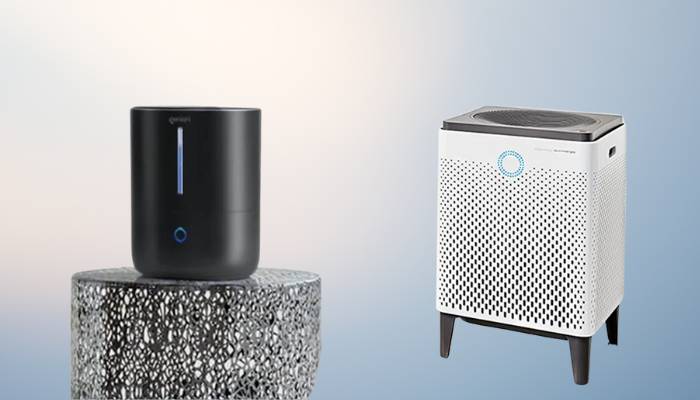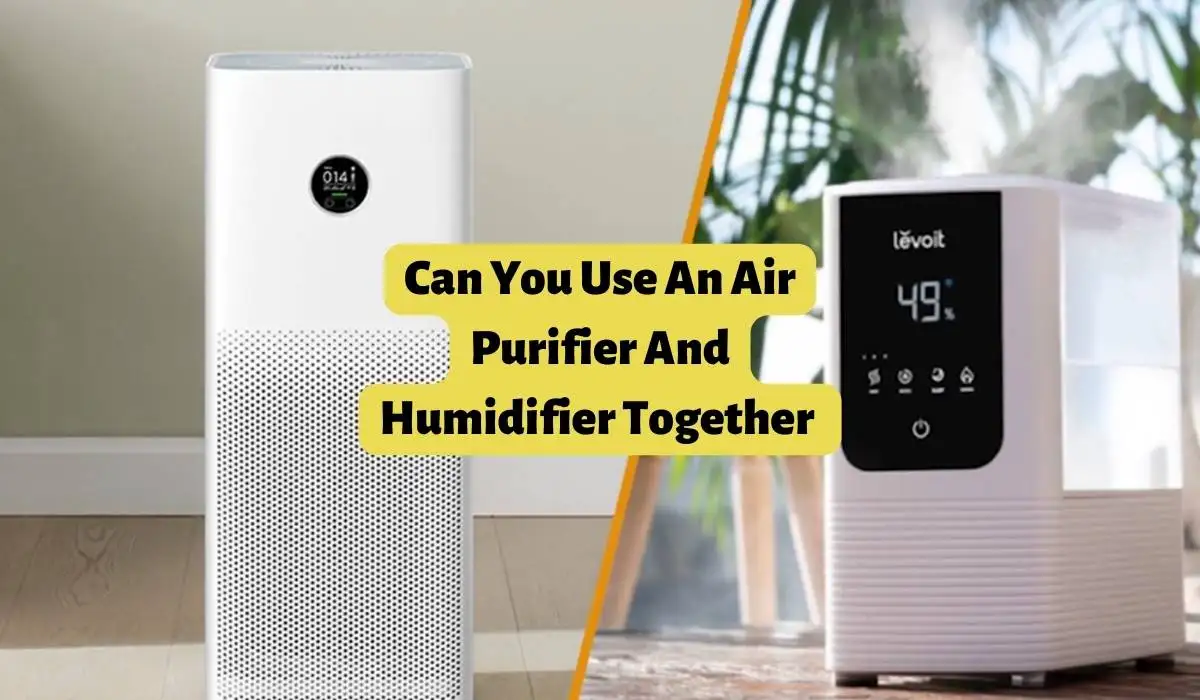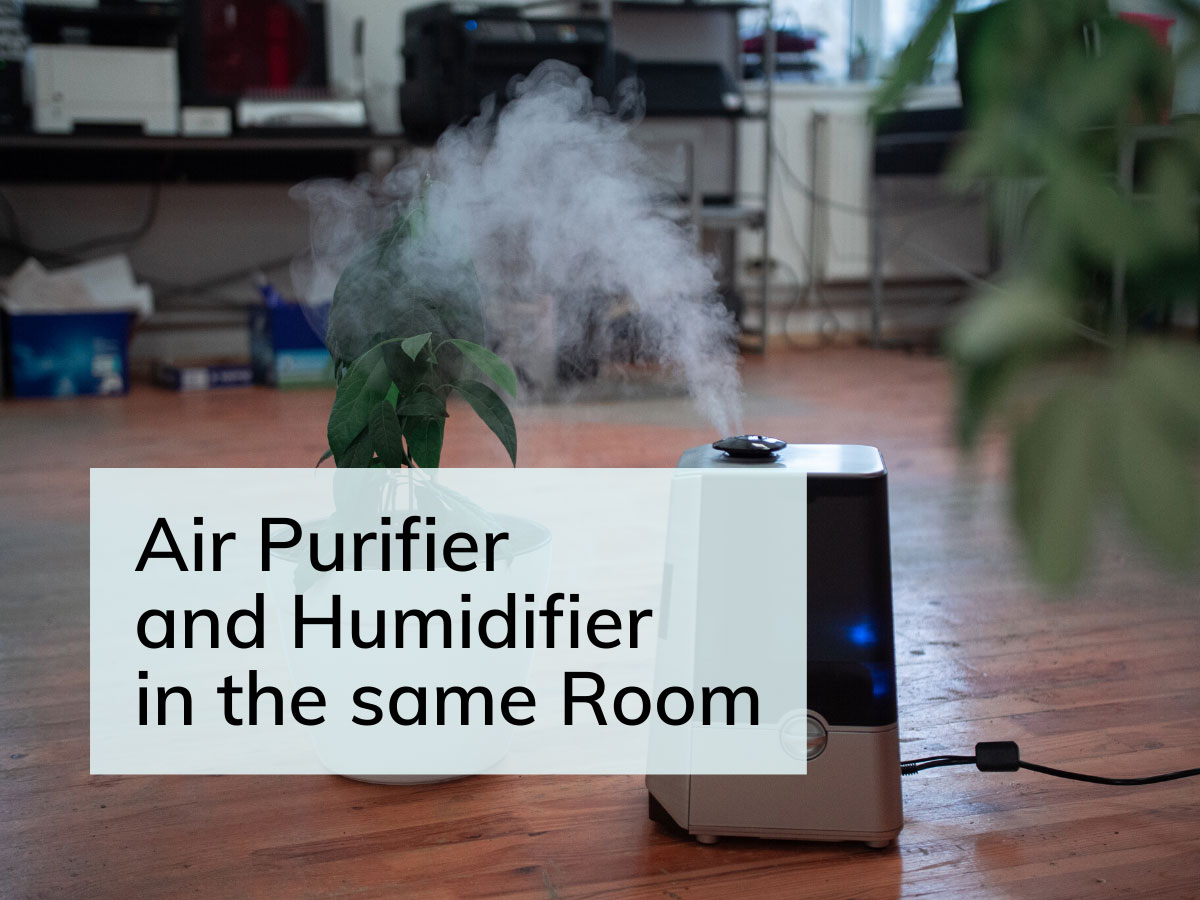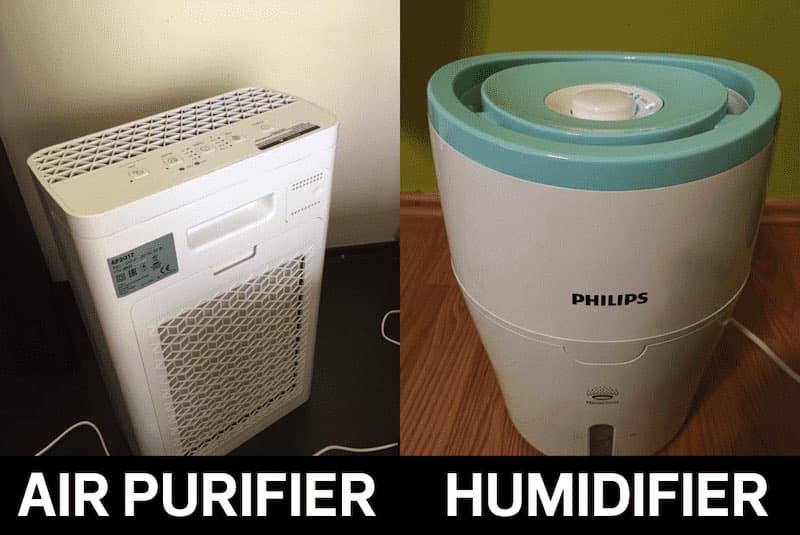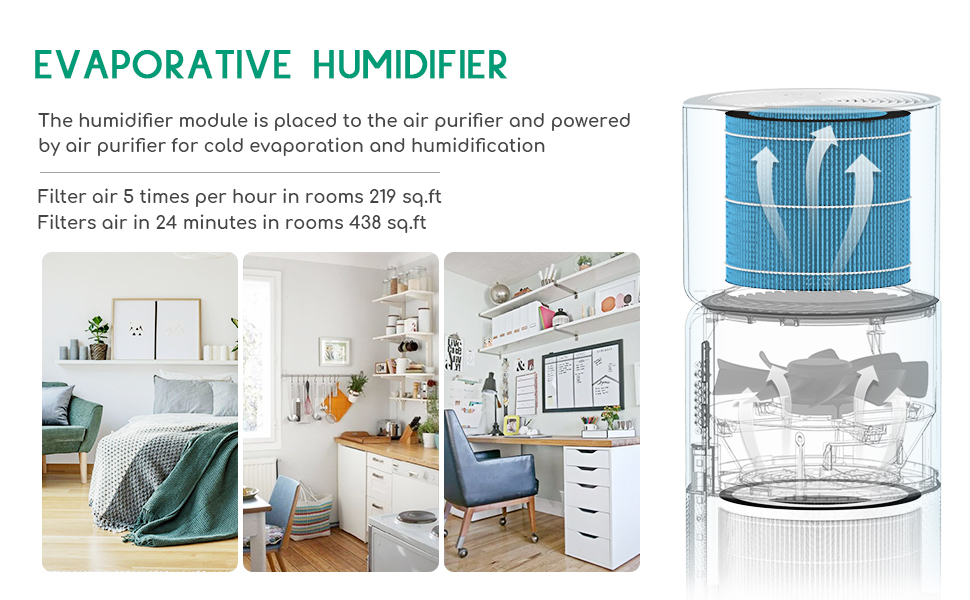Air Purifier And Humidifier In Same Room
Many people want to improve their indoor air quality and comfort. Two common devices for achieving this are air purifiers and humidifiers. An air purifier removes pollutants, while a humidifier adds moisture to the air. But is it safe and effective to use both in the same room? The answer is generally yes, but understanding how they interact is crucial.
Understanding Air Purifiers
An air purifier's primary function is to clean the air. It achieves this by drawing air in, filtering out pollutants, and then releasing the cleaned air back into the room. There are several types of air purifiers, each using different filtration technologies.
Types of Air Purifiers
- HEPA Filters: High-Efficiency Particulate Air (HEPA) filters are the most common and effective for removing dust, pollen, pet dander, mold spores, and other airborne particles. They capture particles down to 0.3 microns in size with very high efficiency. Think of a HEPA filter as a very fine sieve, trapping particles as air passes through it.
- Activated Carbon Filters: These filters use activated carbon to absorb gases, odors, and volatile organic compounds (VOCs). They are particularly useful for removing smoke, cooking smells, and chemical fumes. Imagine activated carbon as a sponge with countless tiny pores that trap odor molecules.
- UV-C Light Purifiers: These purifiers use ultraviolet (UV-C) light to kill bacteria, viruses, and other microorganisms. While effective, they often require longer exposure times to be truly efficient. Think of UV-C light as a disinfectant for the air, like using it to sanitize surfaces.
- Ionic Air Purifiers: These purifiers release ions into the air, which attach to particles, making them heavier and causing them to fall to the ground or stick to surfaces. While they can remove particles, they may also produce ozone, a lung irritant.
Understanding Humidifiers
A humidifier adds moisture to the air, increasing the humidity level. This can alleviate dry skin, dry nasal passages, and other discomforts associated with dry air, especially during winter months. Like air purifiers, humidifiers also come in different types.
Types of Humidifiers
- Cool Mist Humidifiers: These humidifiers release cool mist into the air, using either an ultrasonic vibration or an evaporative wick filter. They are generally safer for homes with children and pets, as there is no risk of burns.
- Warm Mist Humidifiers: These humidifiers boil water and release warm steam into the air. They can help kill bacteria and mold in the water, but pose a burn risk.
- Evaporative Humidifiers: These humidifiers use a wick filter to absorb water, and a fan blows air through the filter, evaporating the water and releasing moisture into the air.
- Ultrasonic Humidifiers: These humidifiers use high-frequency sound vibrations to create a fine mist. They are quiet and energy-efficient.
Synergy or Conflict: Air Purifier and Humidifier Together
Using an air purifier and humidifier in the same room can be beneficial when done correctly. The key is understanding how they might influence each other and taking steps to optimize their performance.
Potential Benefits
- Improved Air Quality and Comfort: The air purifier removes pollutants, while the humidifier adds moisture, creating a more comfortable and healthier environment.
- Reduced Respiratory Issues: By removing allergens and irritants and maintaining optimal humidity, both devices can help alleviate symptoms of allergies, asthma, and other respiratory problems.
- Better Sleep: Dry air can disrupt sleep. A humidifier can help maintain comfortable humidity levels, promoting better sleep, while a purifier ensures the air is clean from allergens, which can also disturb sleep.
Potential Conflicts and How to Avoid Them
- Filter Clogging: High humidity can cause dust and other particles to clump together, potentially clogging the air purifier's filter more quickly. Solution: Regularly clean or replace the air purifier's filter as recommended by the manufacturer. Also, make sure the humidity level is appropriate and not excessive.
- Mold Growth: Excessive humidity can promote mold growth, both in the humidifier itself and in the surrounding environment. Solution: Regularly clean the humidifier according to the manufacturer's instructions. Use distilled water to prevent mineral buildup and microbial growth. Ensure proper ventilation in the room.
- Reduced Air Purifier Effectiveness: Very high humidity can reduce the efficiency of some air purifiers. Solution: Maintain humidity levels between 30% and 50%, which is generally considered optimal for health and comfort. Use a hygrometer to monitor humidity levels.
- Ozone Production (with Ionic Purifiers): Some ionic air purifiers produce ozone, which can react with moisture to create other pollutants. Solution: Avoid using ionic air purifiers in the same room as a humidifier. Opt for HEPA or activated carbon filters instead.
Best Practices for Using Air Purifier and Humidifier Together
To maximize the benefits and minimize the risks, follow these best practices:
- Placement: Position the air purifier and humidifier on opposite sides of the room to ensure adequate air circulation and prevent moisture from directly affecting the air purifier.
- Maintenance: Regularly clean and maintain both devices according to the manufacturer's instructions. This includes cleaning or replacing filters in the air purifier and cleaning the humidifier to prevent mold and bacteria growth.
- Water Quality: Use distilled water in the humidifier to prevent mineral buildup and the release of minerals into the air. Tap water often contains minerals and chlorine, which can contribute to air pollution.
- Humidity Monitoring: Use a hygrometer to monitor the humidity level in the room. Aim for a humidity level between 30% and 50%.
- Ventilation: Ensure proper ventilation in the room to prevent excessive humidity buildup. Open windows periodically or use a ventilation system to circulate fresh air.
- Filter Selection: Choose an air purifier with a HEPA filter for removing particles and an activated carbon filter for removing odors and gases.
- Humidifier Type: Consider a cool mist humidifier, especially in homes with children and pets, as they are generally safer than warm mist humidifiers.
Choosing the Right Products
Selecting the right air purifier and humidifier is essential for achieving optimal results.
Air Purifier Considerations
- Room Size: Choose an air purifier that is appropriately sized for the room. Look for the Clean Air Delivery Rate (CADR), which indicates how quickly the purifier can clean a room of a certain size.
- Filter Type: Opt for a HEPA filter for particle removal and an activated carbon filter for odor and gas removal.
- Noise Level: Consider the noise level of the air purifier, especially if you plan to use it in a bedroom.
- Features: Look for features such as automatic mode, which adjusts the fan speed based on air quality, and a filter replacement indicator.
Humidifier Considerations
- Room Size: Choose a humidifier that is appropriately sized for the room.
- Type: Consider a cool mist humidifier for safety and ease of use.
- Tank Capacity: Choose a humidifier with a sufficient tank capacity to run for an extended period without needing frequent refills.
- Features: Look for features such as an automatic shut-off, which turns off the humidifier when the water tank is empty, and a humidity control setting.
Conclusion
Using an air purifier and humidifier in the same room can be a great way to improve air quality and comfort. By understanding how these devices interact and following best practices, you can create a healthier and more comfortable indoor environment. Remember to prioritize regular maintenance, monitor humidity levels, and choose the right products for your needs. With careful planning and execution, you can enjoy the benefits of both clean and properly humidified air.
Ultimately, consulting with an HVAC professional or an expert in indoor air quality can provide personalized recommendations based on your specific needs and environmental conditions.


